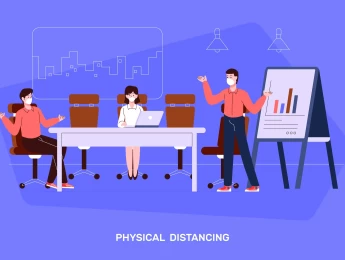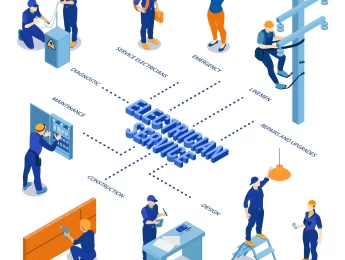COVID-19 has introduced the challenges of virtual working, where team connection and productivity are not guaranteed. While virtual teams offer benefits, they risk misalignment and reduced collaboration, affecting trust and engagement. Building a successful virtual team requires trust, clear communication, and knowledge-sharing, especially due to limited in-person interaction.
Virtual teams can benefit both remote workers and employers if challenges are managed. Success starts with selecting the right team members and fostering open communication in a trusting environment. The first 30 days are crucial for setting team traditions. As 70% of professionals anticipate increased use of online collaboration, integrating technology is essential for thriving virtual teams.
Upon completion of this course, participants will be able to:
- Create strategies for overcoming obstacles to virtual management.
- Create a team environment despite geography, time zones, and cultural challenges.
- Understand the distinction between traditional and virtual leadership skills, competencies, and attitudes needed to motivate workers across boundaries.
- Gain new skills and tools required to lead across boundaries.
- Manage performance virtually.
- Analyse personal growth virtually.
- Work with virtual teams.
- Use the tools of virtual management.
- Work with different cultures in the virtual space.
- Integrate multicultural considerations into thinking and decision-making.
This course is designed for roles that provide strong leadership and virtual management of daily responsibilities virtually. It would be most beneficial for:
- Senior Managers
- Business Leaders
- Operations Managers
- Project Managers
- IT Managers
- Marketing Managers
- Commercial Managers
- Sales Professionals
- HR Managers
- Team Leaders
Managers today often find themselves balancing the need to get the job done quickly, perhaps with fewer people, and to build working relationships that span barriers of time, distance, and culture, to name just a few. For many managers, this unfamiliar territory requires a new way of thinking about leading people.
The course builds skills in two areas vital to the success of a virtual team: distance management and team leadership. By combining theory with experiential exercises, participants develop the skills required to meet the demands of the constantly changing global work environment.
This course will provide a variety of proven adult learning techniques to ensure maximum understanding, comprehension, and retention of the information presented. This includes highly interactive exercises, case studies, and targeted videos relevant to the topic. This will be reinforced through active facilitation, group dialogue and feedback throughout. In addition, a Leadership Profile Assessment will be used to showcase the individual's leadership style, with 1-2-1 constructive development feedback provided by the course facilitator.
Day 5 of each course is reserved for a Q&A session, which may occur off-site. For 10-day courses, this also applies to day 10
Section 1: The Virtual Leader
- Understand the changing global industries.
- Understand global cultures and how they differ.
- Learn the impact of technology on virtual management.
- The difference between the fundamentals of Virtual vs. direct Leadership.
- Understand the competencies of virtual leadership.
Section 2: The Administration Competencies of Virtual Leadership
- Understand the two components of organising leadership.
- How to use virtual organisation tools for calendar, time, and media management.
- How to create a well-developed sense of both self-awareness and awareness of others.
- Learn effective delegation techniques of virtual leadership.
- Understand the power of empathy in motivating virtual teams.
Section 3: Communication and Diligence of Virtual Leadership
- How to set clear goals and internal communication vertically and horizontally.
- How to develop virtual listening skills.
- How to use multiple forms of media for distance communications.
- Understanding continuous learning and knowledge transfer.
- Understanding empowerment VS delegation.
Section 4: Team Building Virtual Leadership
- Learn to set the roles and rules for a team.
- Understanding team dynamics.
- Understanding various team styles.
- How to team build for successful planning.
- How to build a synergetic culture from multi-cultures.
- Learn the power of cultural dynamics in productivity.
Section 5: Trust and Virtual Leadership
- Understanding the speed of trust in an organisation.
- How to build and Keep trust across boundaries.
- Learn the role of ethics and integrity play in building trust.
- Understanding how humility is a characteristic of a highly effective virtual leader.
Upon successful completion of this training course, delegates will be awarded a Holistique Training Certificate of Completion. For those who attend and complete the online training course, a Holistique Training e-Certificate will be provided.
Holistique Training Certificates are accredited by the British Assessment Council (BAC) and The CPD Certification Service (CPD), and are certified under ISO 9001, ISO 21001, and ISO 29993 standards.
CPD credits for this course are granted by our Certificates and will be reflected on the Holistique Training Certificate of Completion. In accordance with the standards of The CPD Certification Service, one CPD credit is awarded per hour of course attendance. A maximum of 50 CPD credits can be claimed for any single course we currently offer.
- Course Code MG2-131
- Course Format Classroom, Online,
- Duration 5 days










